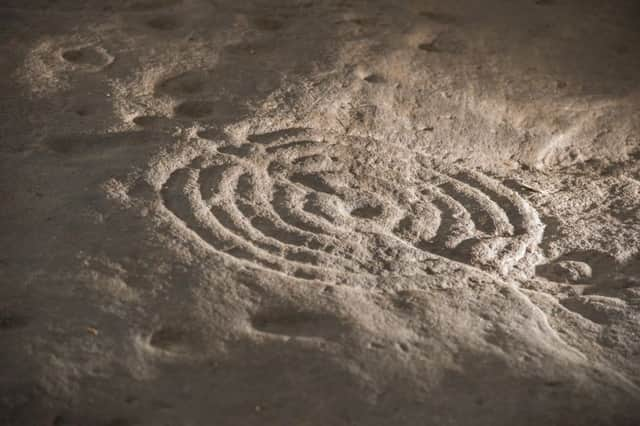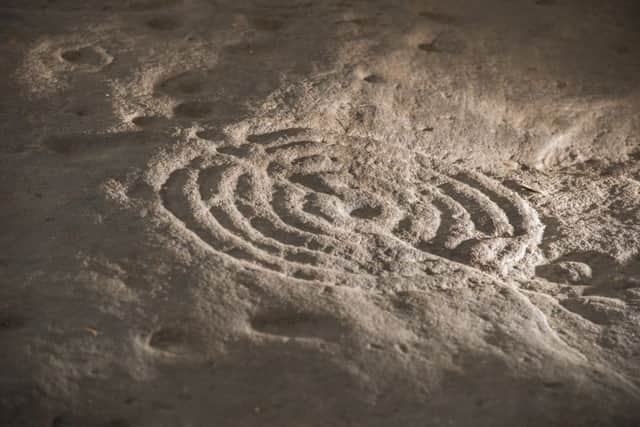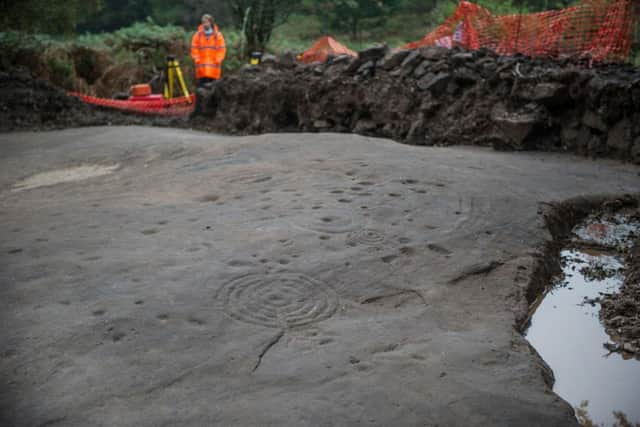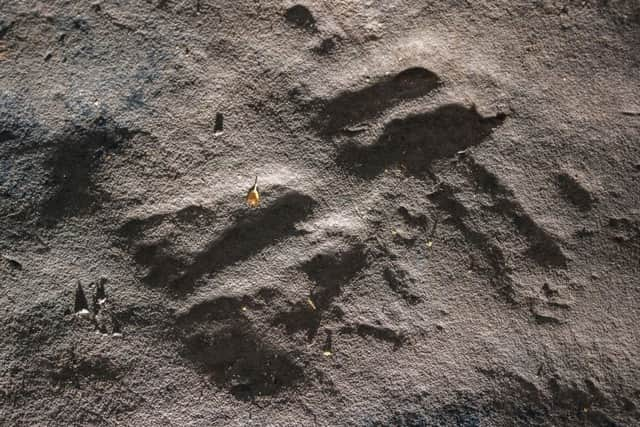Video: Cochno Stone reburied following academic survey


The Cochno Stone is said to contain some of the finest Neolithic or Bronze Age cup and ring markings in Europe.
The sandstone slab lies on land in Faifley, a large housing estate in Clydebank, and was originally buried in 1965 to protect it from vandalism.
Advertisement
Hide AdAdvertisement
Hide AdMeasuring 42 ft by 26 ft, it features around 90 carved indentations and grooved spirals, along with a ringed cross and a pair of four-toed feet.


Archaeologists unearthed the prehistoric stone earlier this month before using 3D-imaging technology to make a detailed digital record of the site.
They hope this will provide more information on the stone’s history, purpose and the people who created it about 5,000 years ago.
Dr Kenny Brophy of the University of Glasgow University, who led the dig, said it was “the biggest and, I would argue, one of the most important Neolithic art panels in Europe”.


It was reburied today under several feet of soil and is unlikely to be seen again by human eyes for decades.
Straddling the garden of a private property and parkland owned by the local council, the stone is today surrounded by trees.
But in 1887, when it was rediscovered by the Rev James Harvey, the stone was largely buried under open farmland.
Advertisement
Hide AdAdvertisement
Hide AdHistory researcher Alexander McCallum, who has lobbied to have the stone uncovered, said there were multiple interpretations for the carvings.


“Some people think that the Cochno Stone is a map showing the other settlements in the Clyde Valley – that’s one of the theories,” he told The Scotsman in 2014.
“I think it was probably used for lots of things; it was never used for just one thing and over hundreds of years it changed use.
“As far as the symbolism goes, some believe it’s a portal, of life and death, rebirth, a womb and a tomb – people believed in reincarnation, so they would go into the earth and then come out again.”
